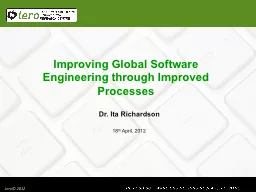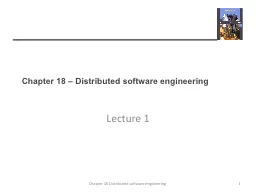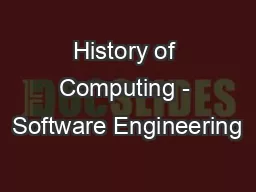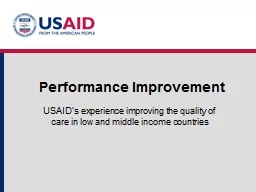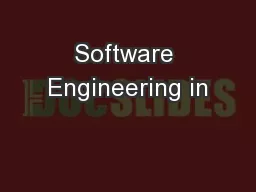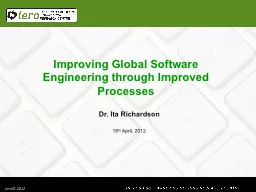PPT-Improving Global Software Engineering through Improved Processes
Author : atomexxon | Published Date : 2020-08-27
Dr Ita Richardson 18 th April 2012 2 Presentation Structure My background Global Software Development Understanding the problems Providing a solution Global Teaming
Presentation Embed Code
Download Presentation
Download Presentation The PPT/PDF document "Improving Global Software Engineering t..." is the property of its rightful owner. Permission is granted to download and print the materials on this website for personal, non-commercial use only, and to display it on your personal computer provided you do not modify the materials and that you retain all copyright notices contained in the materials. By downloading content from our website, you accept the terms of this agreement.
Improving Global Software Engineering through Improved Processes: Transcript
Download Rules Of Document
"Improving Global Software Engineering through Improved Processes"The content belongs to its owner. You may download and print it for personal use, without modification, and keep all copyright notices. By downloading, you agree to these terms.
Related Documents

